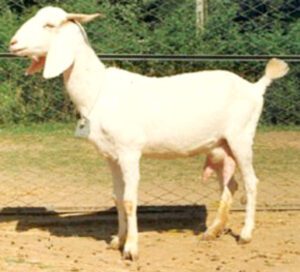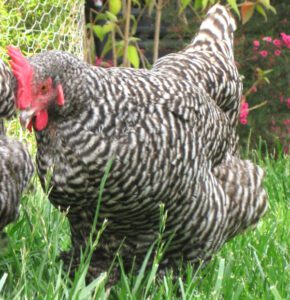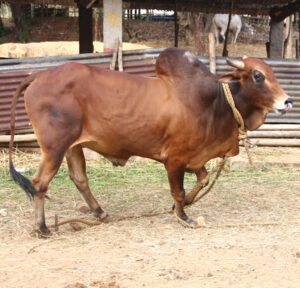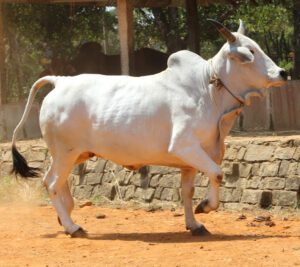The Hariana cattle (also spelled Haryana) is a breed of dairy cattle which is raised mainly for milk production purpose in it’s native area. It is also known as Hisar, Hansi and Haryanvi cattle.
The breed was originated from India. And it is native to North India. It is a very hardy and disease resistant breed and well adapted to the conditions of North India.
The breed is mainly found in Haryana and eastern Punjab. And it is one of the 75 known breeds of Zebu cattle.
Zebu is actually split about evenly between African and South Asian cattle breeds. The Zebu cattle are thought to be derived from Asian aurochs, sometimes regarded as a subspecies, Bos primigenius namadicus.
And the wild Asian aurochs disappeared during the time of the Indus Valley Civilisation from its range in the Indus River basin and other parts of South Asia possibly due to interbreeding with domestic zebu and resultant fragmentation of wild populations due to loss of habitat.
The Hariana cattle is the native of Rohtak, Karnal, Kurukshetra, Jind, Hissar, and Gurugram districts in the state of Haryana. The cattle are of medium to large size, and are generally of white to gray shades in color.[1] Read full breed information of these cattle below.
Characteristics
The Hariana cattle are very beautiful animals with white or light grey coloration. They have coffin shaped skull. The bull’s color in between fore and hind quarters is relatively dark or dark grey. These animals have long and narrow face, well-marked bony prominence at the center of poll and small horns.
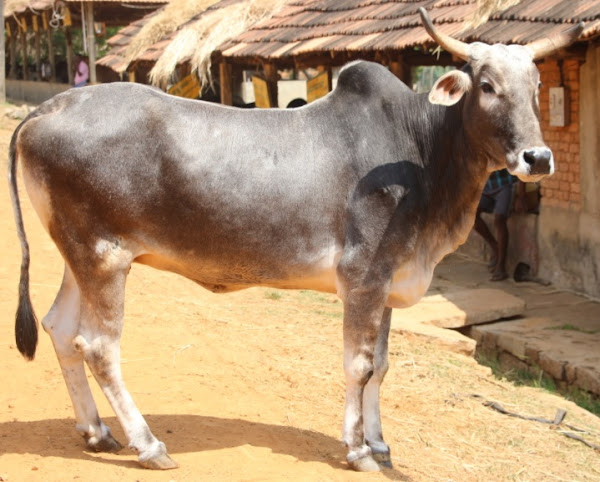
The Hariana is a medium sized cattle breed. Average height of the bulls is between 132 and 155 cm at the withers, and between 127 and 140 cm for the females.
Average live body weight of the mature bulls is around 430 kg. And the mature cows on average weight around 310 kg.
Housing
Arranging a good housing system for your cattle is very important for raising these animals. A good housing system will keep the animals happy and secure. Ensure good ventilation system and ensure flow of sufficient air and light inside the house.
Feeding
As a dairy cattle breed, the Hariana cows require more green feeds in their diet. Also provide them with adequate drinking water as per their demand.
Breeding
Like many other domestic cattle breeds, Harianas are also very good breeders. They will breed easily without human intervention if you keep just one bull in your herd.
Caring
These cattle are very strong and hardy and they generally do very well in their native climate. Arrange a good shelter for them, feed them good quality and nutritious food, and always try to monitor their health on a regular basis. And keep good contact with a vet, so that you can call him/her during emergencies.
Uses
The Hariana cattle are mainly raised as a dairy cattle breed, and used mainly for milk production in it’s native area. But the bulls are also very good at work. So we can call it a dual-purpose breed. It is an important dual-purpose, milch and draught cattle breed of India.
Special Notes
The Hariana cattle are very strong and hardy animals. They are highly disease resistant and well adapted to the local conditions of North India. The cows are very good for milk production. And their milk is of very good quality. Generally, a cow can produce about 10 to 15 liters of milk daily.
The breed is mainly maintained for bullock production as they are powerful work animals and therefore more attention is paid in managing male calves. The Hariana cattle are important Zebu cattle breed. Review full breed profile of this breed in the chart below.
| Breed Name | Hariana | |
| Other Names | Also known as Hisar, Hansi and Haryanvi cattle | |
| Breed Purpose | Mainly milk, but also raised as draft animals for work | |
| Special Notes | Good behavior and temperament, known for their hardiness and their ability to convert grass into milk efficiently, able to adapt a wide variety of climates, very good for milk production, milk is of good quality, the breed is also good for draft purposes, available throughout India | |
| Breed Size | Medium | |
| Bulls | Around 430 kg | |
| Cows | Around 310 kg | |
| Climate Tolerance | All climates | |
| Coat Color | Generally white or light grey | |
| Horned | Yes | |
| Milk Yield | Good | |
| Rarity | Common | |
| Country/Place of Origin | India |


